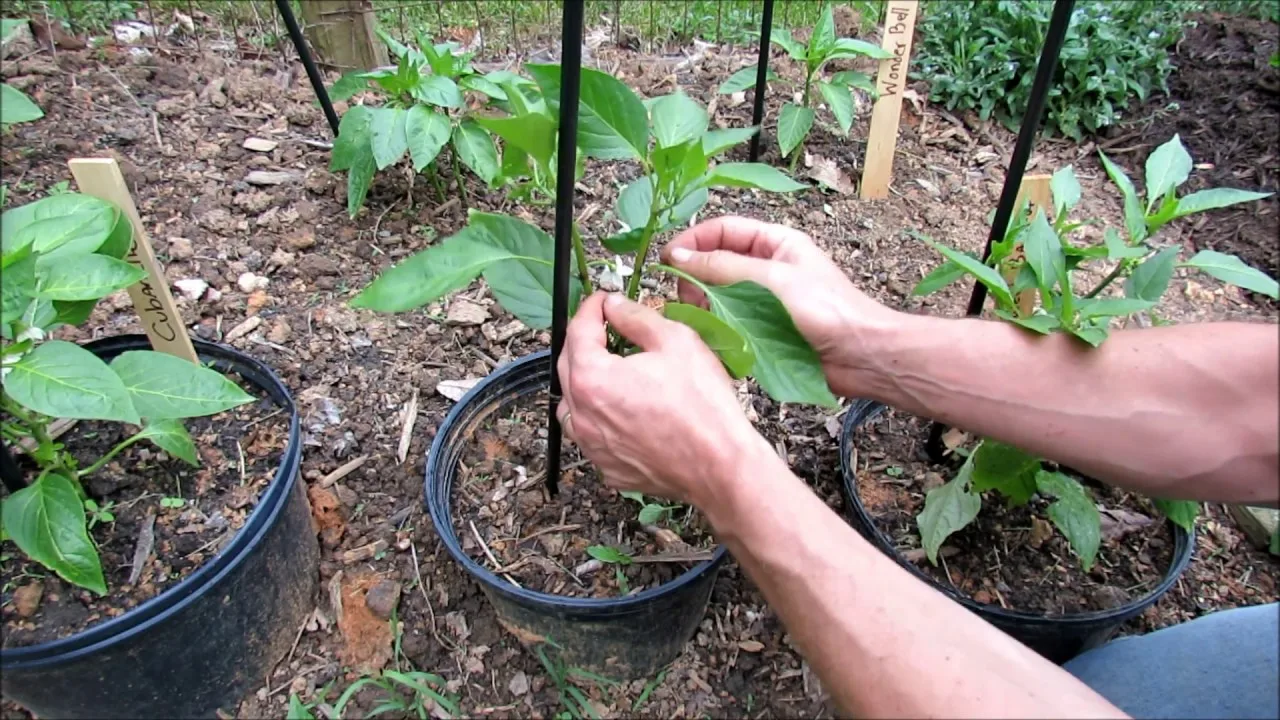Staking pepper plants is an essential practice to ensure they grow healthy and produce a bountiful harvest. Knowing the right time to stake your pepper plants can make a significant difference in their development and yield. Here’s a simple guide on when to stake your pepper plants to help them thrive.

when to stake pepper plants
Why Stake Pepper Plants?
Before diving into the timing, it’s important to understand why staking pepper plants is beneficial:
- Support: Staking provides support to pepper plants, preventing them from bending or breaking under the weight of the peppers.
- Air Circulation: It helps improve air circulation around the plants, reducing the risk of fungal infections.
- Sunlight Exposure: Proper staking ensures that all parts of the plant receive adequate sunlight, promoting even growth.
Ideal Time to Stake Pepper Plants
The best time to stake pepper plants is early in their growth cycle. Here are the key stages to consider:
- Planting Time: The most effective time to stake pepper plants is when you first transplant them into your garden or pots. At this stage, the plants are still small and establishing their root systems. Staking early minimizes the risk of damaging the roots later on.
- Early Growth Stage: If you missed staking at the time of planting, the next best time is during the early growth stage, typically within the first 3-4 weeks after planting. During this period, the plants are still relatively small, making it easier to place stakes without disturbing the roots too much.
- Before Flowering: Ensure your pepper plants are staked before they start flowering. Once the plants begin to flower and set fruit, they become heavier and more prone to bending or breaking. Staking before this stage provides the necessary support as the plants begin to bear fruit.
How to Stake Pepper Plants
Now that you know when to stake your pepper plants, here’s a quick guide on how to do it:
- Choose the Right Fiberglass Plant Stakes: Use sturdy materials such as fibreglass plant stakes, which are durable and can withstand outdoor conditions. The stakes should be about 3-4 feet tall, depending on the variety of pepper.
- Position the Fiberglass Plant Stakes: Place the stakes about 1-2 inches away from the plant to avoid damaging the root system. Insert the stakes into the ground to a depth of at least 6-8 inches for stability.
- Tie the Plants: Use soft ties, such as garden twine or strips of cloth, to gently secure the plants to the stakes. Tie the plants loosely to allow for growth and avoid constricting the stems.
- Regular Adjustments: As the pepper plants grow, adjust the ties and add additional support if necessary. Regularly check the ties to ensure they are not too tight and that the plants remain secure.
Conclusion
Staking pepper plants is a simple yet crucial practice that ensures your plants remain healthy and productive. By staking early in the growth cycle and providing proper support, you can enjoy a robust harvest of delicious peppers. Remember, the key is to stake at the right time and to use appropriate materials to support your plants effectively.
Happy gardening!




























